

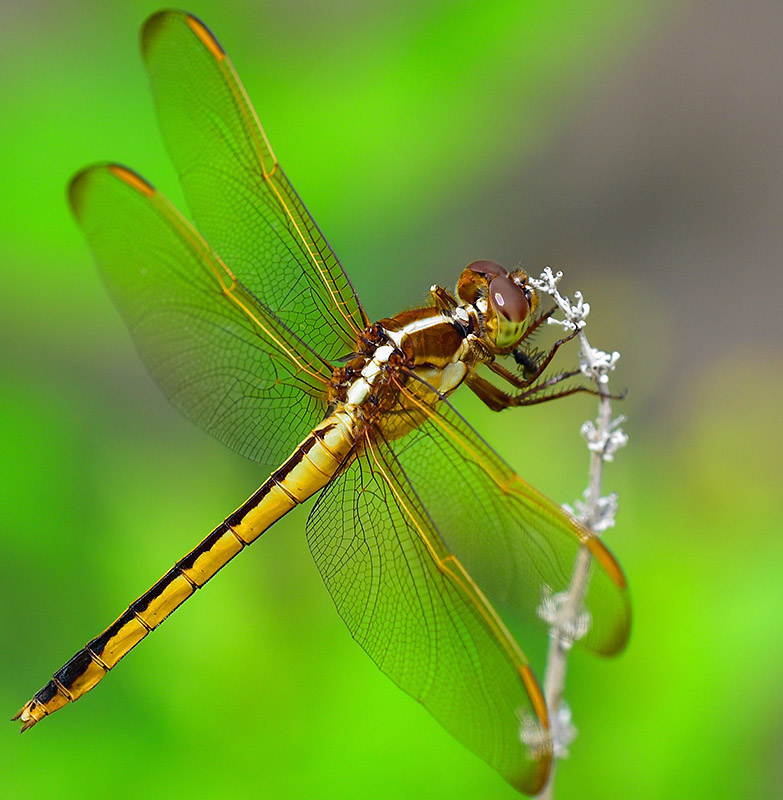
This is from the backyard, May 2015. If you look carefully you can see its prey which I suspect (and hope) to be one of that big nasty mosquitoes we're seeing after all the rains. Thanks again to Gil who provided the ID: This is a female-type skimmer, family Libellulidae. There are two species in your area that are almost identical: Golden-winged and Needham's Skimmers. They are told apart by the markings on the sides of the thorax. I can see just enough of that in your photo to suspect this is a female or immature male Needham's Skimmer (Libellula needhami). After viewing the image below: Based on the lateral view, it is confirmed: Needham's Skimmer. Image Details: Nikon D750 Camera, 200mm f4 macro lens aperture priority f8, 1/1600s, auto-ISO 1000, matrix metering. I used the fine resolution JPEG out of the camera, vivid setting, plus HDR toning in Photoshop at default settings, but with a fade to just saturation.
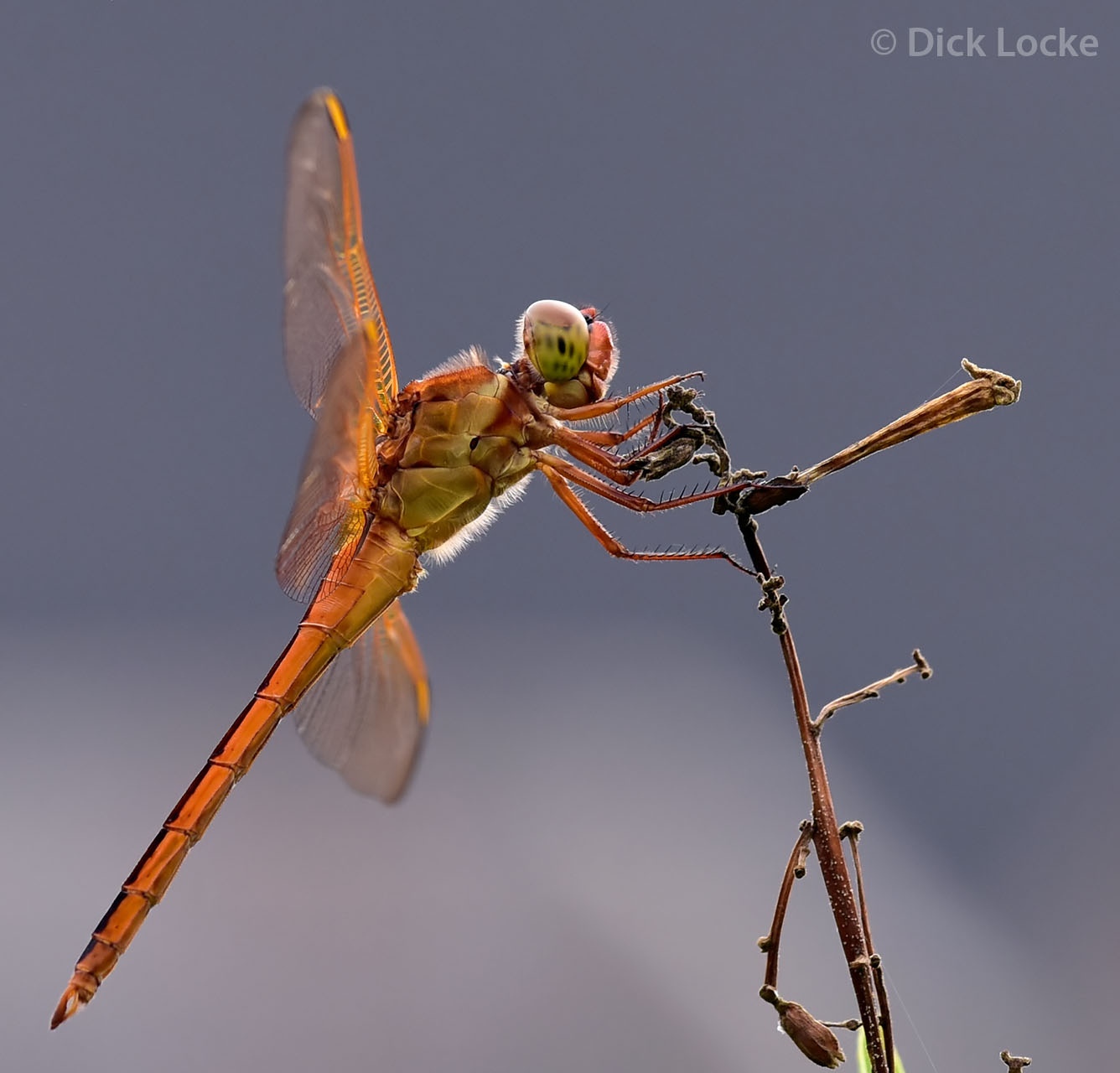
Check out the white hair on this guy (it's a male)! There was a little back-light thing going on with this images. Nikon D810A, f5.6, 1/1000s, ISO 400, -1 spot metered with the 500 just about as close as I could get! Posted 8/1/2016. Bugguide.net link here. Needham's and Golden-winged skimmers are almost identical, unfortunately for those of us trying to make IDs!
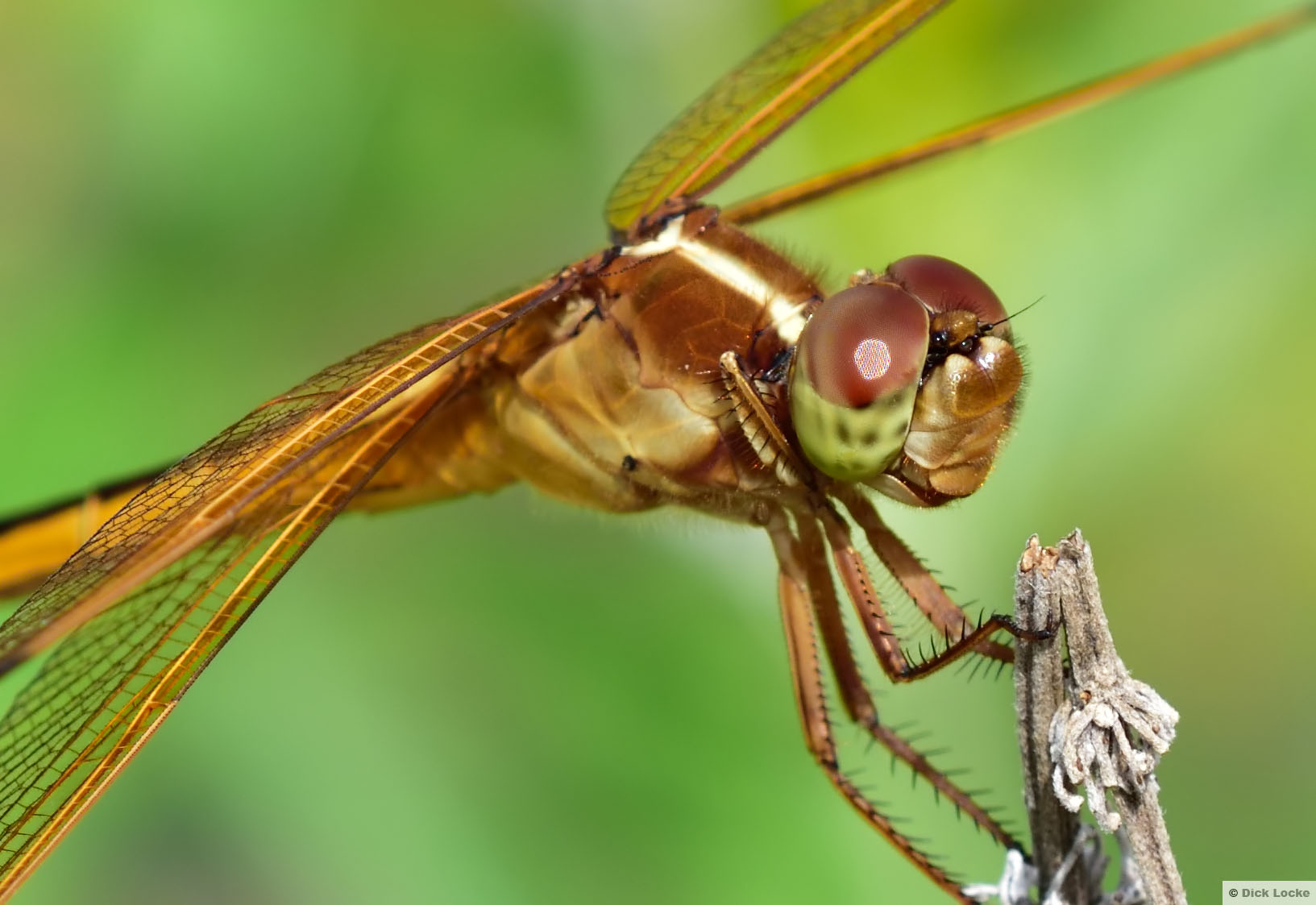
Nikon D810A camera , 200mm F4 lens, f9, 1/640s, ISO400, matrix metered, Active D-Lighting Normal, Vivid setting. Crop at full camera resolution, Neat Image noise reduction, saved as .jpg in Photoshop at 8/high quality setting, no sharpening or other processing.

Best Guess from Gil: Roseate Skimmer (Orthemis ferruginea) and I (Dick) believe it to be a male. The red dragonflies in the yard are proving most elusive.

Best guess is another male Roseate Skimmer... This time caught in direct sunlight. Unfortunately I was wrestling with my camera while trying to shoot this guy and only got one usable picture of this pose.
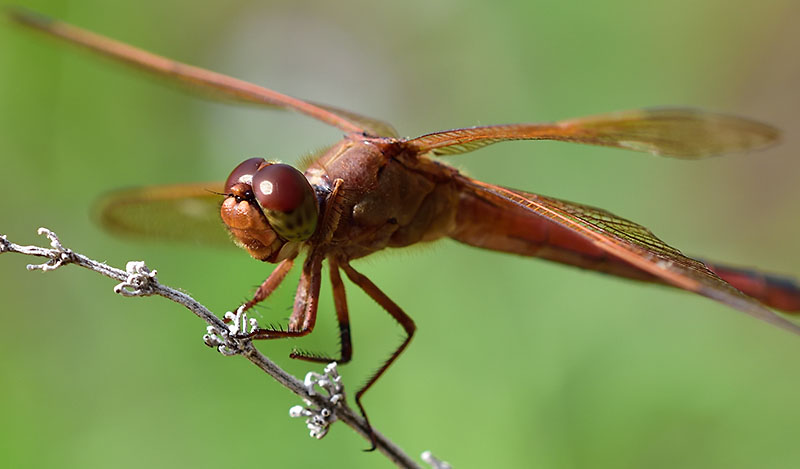
Nikon D810A camera, 200mm f4 lens, f8, 1/800s, ISO 640.

Same dragonfly as top of page.
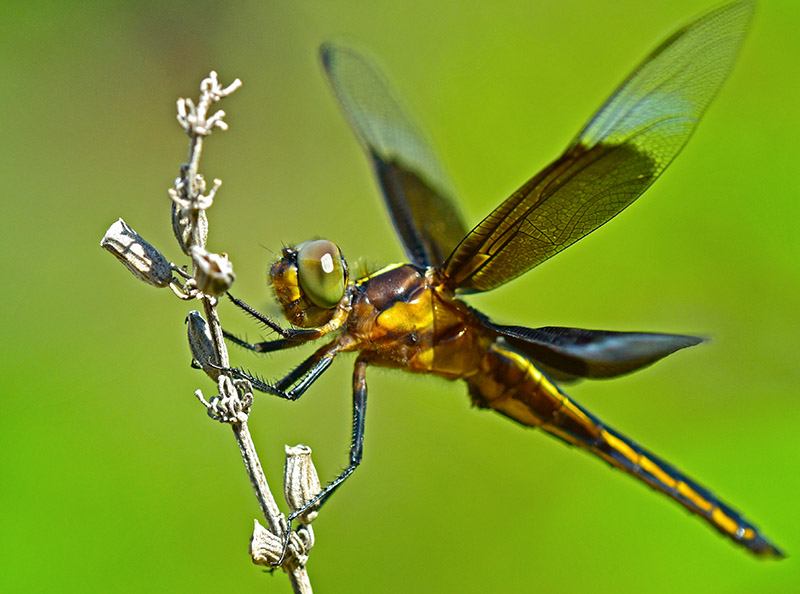
Gil advises: Widow Skimmer (Libellula luctuosa), either a female or an immature male. The pattern of darkness on the wing is distinctive in this species. It is a close relative to, and in the same genus as, your Needham's Skimmer. Details: Backyard 5/31/15, Nikon D750, 200mm micro lens at f8, 1/1600s, ISO 1000.


Copyright ©
by Dick Locke. All Rights Reserved.
Contact and Image Use Information